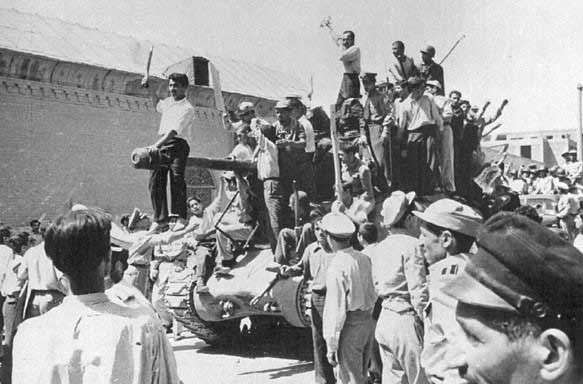
 Who Are The REAL Terrorists? [Bad History]
Who Are The REAL Terrorists? [Bad History]
The story of Western intervention in Iran
In 1953 the democratically elected Prime Minister of Iran, Mohammad Mossaddegh was overthrown as a result of combined efforts made by the United States and the United Kingdom. In his place they propped up the Shah; Mohammad Reza Pahlavi, an unelected monarch.
This event is rarely spoken about in mainstream media, but goes a great distance in highlighting the real ambitions and motvations of countries like the UK & US, who claim that their war in the Middle-East is one of self-defence, counter-terrorism or for anything more than material and financial gain.
 Mohammad Mossaddegh (source: sfsu.edu)
Mohammad Mossaddegh (source: sfsu.edu)
In 1953 Mohammad Mossaddegh, the Prime Minister of Iran sought to inspect the books of the Anglo-Iranian Oil Company (AIOC), which we now know under their new, consumer friendly brand name BP, or British Petroleum. His goal was to change the terms of the company's access to Iranian oil reserves.
In a classic example of Western 'powers' rejecting a smaller country's attempt at 'independance' BP refused to cooperate with the Iranian government. In an act of defiance, Mossaddegh and the Iranian parliament voted to nationalise the company's assets and expel BP's representatives from the country.
Britain, ever the sore loser, closed down its oil installations and removed its staff, leaving Iran with the oil but with little means to extract and sell it. Britain also boycotted Iran and made it difficult for other buyers to obtain oil. Essentially, because Iran wanted to have the freedom of benefitting from what is under its own soil, Britain made sure that Iran was unable to do so in an effort to manufacture dependancy on the UK.
Though Iran lacked the means to effectively extract, treat and sell its oil, Mossaddegh was not intimmidated, despite the loss of income, making it hard for him to manage domestic life in Iran. Despite this, he grew in popularity in Iran and Britain grew ever more bitter having lost control of the oil industry in Iran.
The US too would stand to benefit from the UK's reaquisition of Iranian oil of course.
In March of 1953, the CIA launched a propaganda campaign against Mossaddegh, and the budget of $1,000,000 was approved to take him out of power. The US started an operation known as Operation Ajax, to convince the Shah to agree to Mossaddegh's removal from power. The Shah agreed in August of that year (1953).
Mossaddegh was sentenced to imprisonment for three years on the 21st of December 1953. The Shah was put 'In his place...whose corrupt...reign bred discontent' (Medhi Hassan, Aljazeera).
Fast forward to 1978 and the pepole of Iran had become so opposed to the Shah's rule that widespread demonstrations and riots were taking place and strikes were bringing Iran to a standstill. Between 6 and 9 million people marched against him in 1978. By the 11th February 1979 the Monarchy had been successfully dissolved.
Awareness of American involvement led to widespread hatred for the US and 52 Americans were taken hostage when Iranian students stormed an Embassy in Tehran.

In the 1980's the US backed Iraq in its invasion of Iran. Washington supported Sadam Hussein in his use of chemical weapons against Iranian forces. The US shoot down an Iranian passanger plane killing 200 civilians and in 1983 they accused Iran of being behind a bombing of a US barracks in Beirut.
We hope that this summary of events from the 1953 coup shine some light on conflicts that are taking place in the Middle-East today. Most importantly we would like to urge people to dig a little deeper than the mainstream news stories when forming opinions about countries and their motivations.
The West are often the aggressor and the random, chaotic backlash that we experience, while horriffying and tragic, is often a repercussion to our own actions and agendas.
